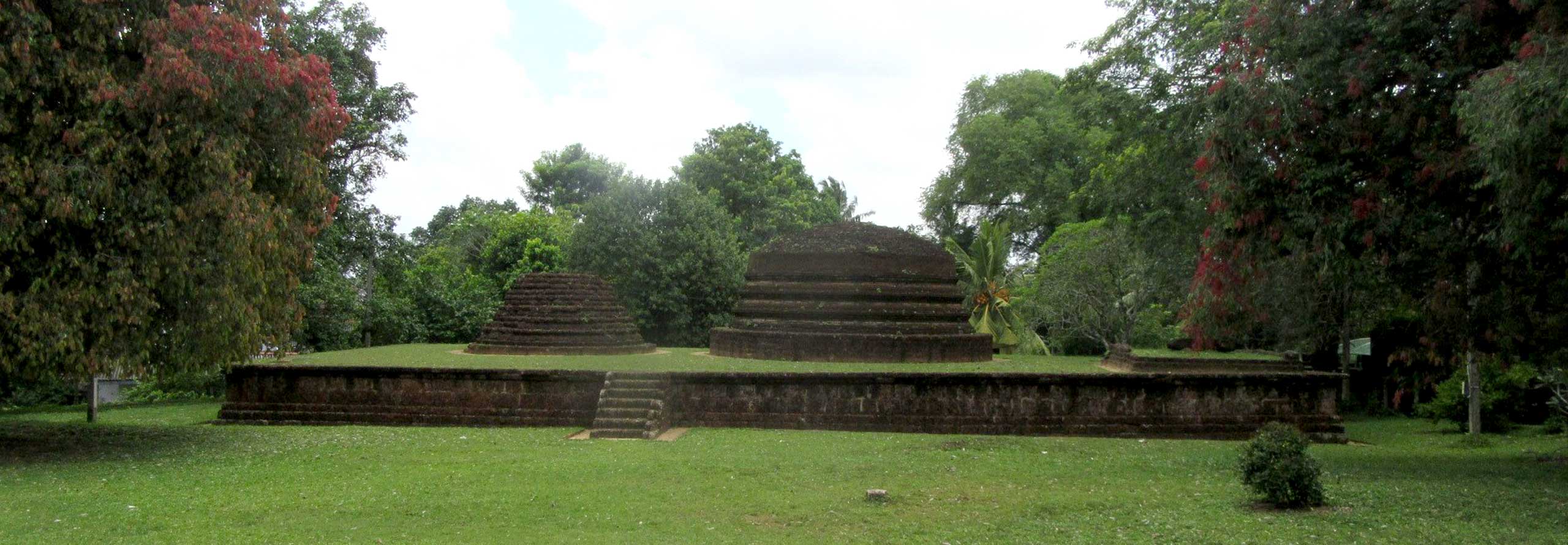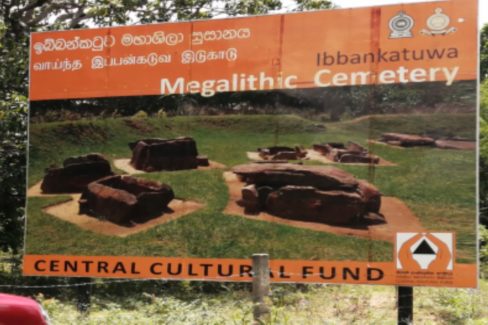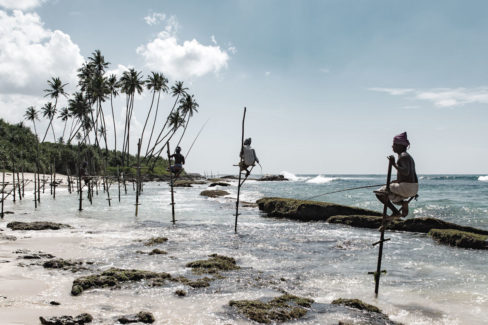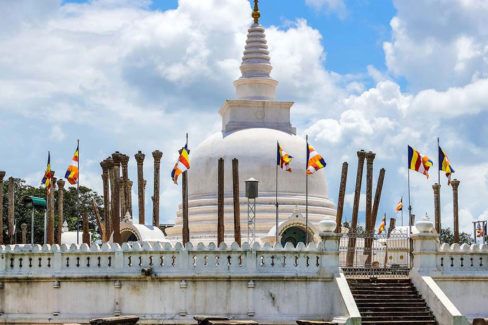The Kotte Kingdom and Its Key Components
Introduction
The Kotte Fortress City or Sri Jayawardenepura as it was named spans the era 1400 – 1597 AD. It was built as a fortress after the war with the Jaffna king. The Kotte area was already populated with many people and Nishshanka Alakeshwara of the famous Alakeshwara family is credited with having built Kotte (Wijewardene, 2011). This is as per the Niyangampaya stone manuscript. After Alakeshwara’s rule (1411 – 1467 AD), Parakramabahu VI developed this kingdom to its highest potential. Although Parakramabahu VI was able to bring all the sub kingdoms under his rule during his reign, it was not a politically stable one. The Kotte kingdom finally ended when it was divided into 3 sections and the rule of one was handed over to the Portuguese King.
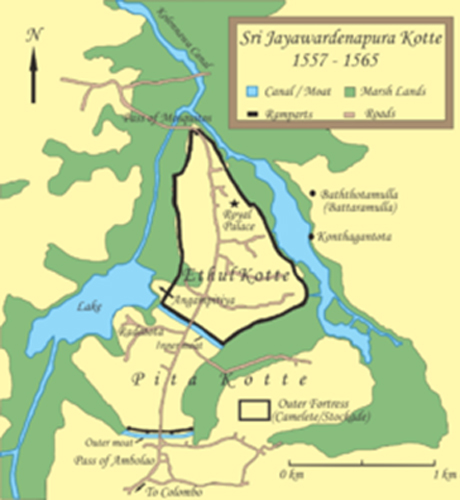
Kotte’s location with naturally protective elements including the natural ditch – Diyawanna, the fact that it was located in the Western province which was already heavily populated, the rainfall being at a high level were all factors chosen for its establishment.
The selection of the ancient village Darugama was significant as this had a waterway that flowed on either side of the village and met in one corner. Due to this, the area was surrounded on 3 sides by water and the fourth side by a narrow strip of land (Wijewardene, 2011). The Diyawanna and Kolonna Lakes were filled with water throughout the year and there were also many marshlands around which were not easy to get across and hence provided protection. It is stated that it took about 20 years to build this fortress.
The Kotte Kingdom was surrounded by a strong rampart, a moat and a marshland. The moat had crocodiles and the wall was so high that no one could climb it even if they arrived via a boat through the moat.
The first inhabitants of the Fort were people who were required for government service. The fort was primarily a military base. There were arsenals, food storage and many wells to provide drinking water. (Wijewardene, 2011)
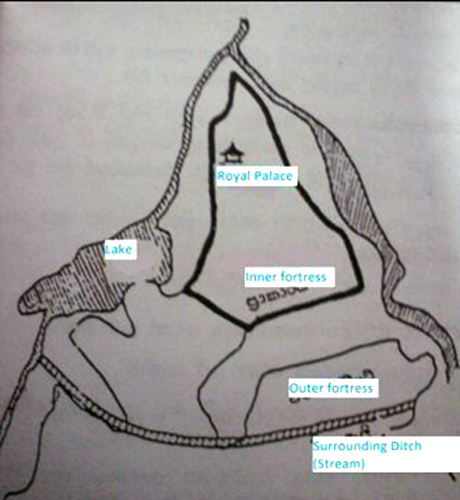
Once Parakramabahu VI chose it as his capital city, there was the need to add new buildings that were required for such a city such as the Dalada Maligawa and King’s Palace. Trade was important and the areas of Pita Kotte, Gothatuwa, Gurubewula, Pepiliyana etc. were important for this purpose (Wijewardene, 2011).
When comparing this kingdom to Anuradhapura and Polonnaruwa, the lack of religious buildings is significant. Besides the Dalada Maligawa and the King’s Palace, most of the other buildings were to do with materialism. Most of the religious buildings were located outside the main city, in the areas of Pepiliyana, Keragala & Kelaniya (Wijewardene, 2011).
In this regard, the ancient Kotte Fortress city had the following key aspects that were established in the city.
Old Fort Rampart
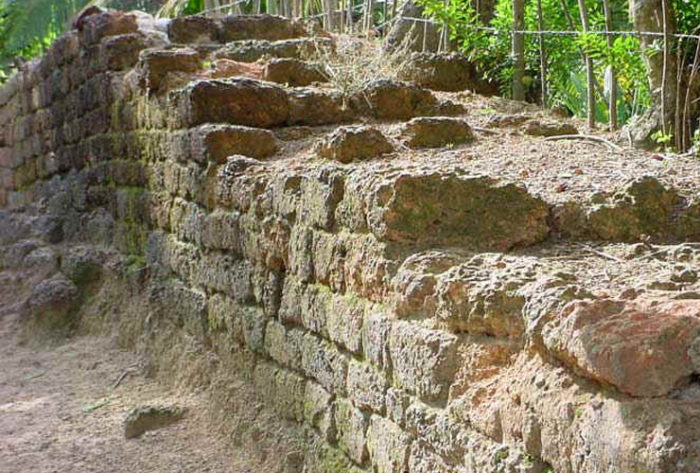
The old fort rampart ran the perimeters from the North Eastern side of the Diyawanna to the Western side, Kolonna Lake and ran along the marshlands. The rampart ran along the marshlands and so is not straight in some places as it was following the perimeter of the marshes.
The Kotte Fortress rampart was built with caboc, the only rampart in Sri Lanka to be built with this material. Each block of caboc measured 26X16 inches. The entire rampart measured 12474 feet (Wijewardene, 2011). Some areas of the rampart measured a height of 8 feet and in other areas, 10 feet. The thickness of the rampart was 30 feet (Ranasinghe, 1970). There are stories that the Perahera took place on this rampart and was one of great show and grandeur.
At each corner of the rampart were four devalas dedicated to the four Hindu gods – Natha, Shiva, Saman and Vishnu. This shows how much Hinduism influenced the rulers at this time in history as this is the only rampart in Sri Lanka that had devalas.
Along the rampart were little rooms for a guard to stay in. The main gateway was the Southern gateway which exited to the Pita Kotte city. From this gateway to the King’s Palace, the roadway was considered the primary city roadway.
Inner Moat & Outer Moat
These two ditches were located on the outer side of the rampart. These were designed in a way that could flood parts of the city if required through the construction of an annicut – small annicut and great annicut – and sluice gates (Ranasinghe, 1970). The moats were about 55 feet deep and 35 feet wide. The dam of the moat was about 20 feet.
Alakeshwara Palace
This location consists of two buildings that are close to each other. The larger building is in the shape of a square and the other smaller one, in the shape of a rectangle. These buildings were constructed with caboc.
There is a belief that this was Alakeshwara the Great’s Palace. Though it is sometimes referred to as his burial ground, this is not accurate as Alakeshwara was executed for trying to take over the crown and his body was fed to the crocodiles (Ranasinghe, 1970).
Veherakanda
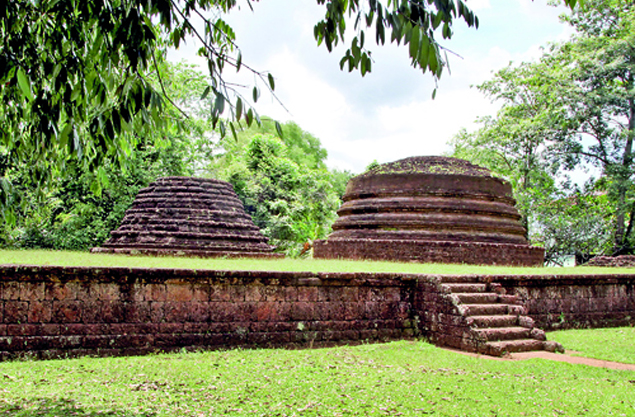
Veherakanda was located near the outer city limits towards the south. There were two stupa here measuring a diameter of 30 feet and a height of 14 feet. These were built on a platform with a height of 5 ½ feet. There is a belief that this was an old aramaya and is a very serene place in the ancient city of Kotte.
Kotta Raja Maha Viharaya
The Kotte Raja Maha Viharaya was built by Parakramabahu VI in 1415. This Viharaya contained frescoes that were created in the 15th century.
The Viharaya was completed ruined by the Portuguese and Dutch during their invasions and was restored later on.
Kotte Dalada Maligawa
The Kotta Dalada Maligawa was built by Parakramabahu VI and he transferred the sacred tooth relic from Gampola to Kotte in 1412. (Wijewardene, 2011)
The Kotte Dalada Maligawa was in the shape of a cornered crown and consisted of 3 stories. It had sculptured columns and atop this was a golden kotha. Adjoining this building were four devalas dedicated to Natha, Vibhishana, Saman and Shiva gods. The Dalada Viharaya was given to Sri Rahula to administer by the king Parakumba VII. The king was considered the guardian of the sacred tooth relic.
The Dalada Maligawa was always placed in front of the King’s palace. The Kotte Dalada Maligawa was located in a place called Maligawatte.
The sacred tooth relic resided here for over a century and with the advent of the colonisers it was transferred to the Sabaragamuwa Delgamuwa Viharaya. (Wijewardene, 2011).The Kotte Dalada Maligawa was completely destroyed by the Portuguese invaders.
King’s Palace
The King’s Palace was considered a five story building with a beautiful edifice. The beauty of this palace is mentioned in many chronicles. There were carved wooden columns as well as a torana or gateway with dragons carved on them. Unfortunately very few remains are seen today in the modern city.
The location of the King’s palace in close proximity to the Dalada Maligawa was for the protection f the sacred tooth relic.
Conclusion
The Ancient Kotte Capital City was one built with the purpose of protection from invaders and enemies. The natural geographical factors such as the DIyawanna, the marshlands and the population helped establish itself as a stronghold of the Sri Lankan king Parakramabahu VI. Although Alakeshwara the Great is credited with having built the city, it is King Parakramabahu VI who fully established Kotte as the capital city of Sri Lanka during his reign.
Sadly today we do not see any of these magnificent structures as they were destroyed by the Portuguese and Dutch when they colonised Sri Lanka. What remains are a few ruins that do not bear witness to the splendor that once was the Kingdom of Kotte or as it was known – Jayawardenepura.
References
Ranasinghe, Douglas D. ‘A Asirimath Kotte’. 1970.
Wijewardene, Ananda. ‘Aethihasika Kotte’. Department of Archaeology, 2011.

